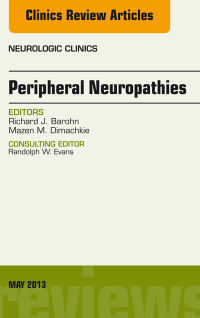-79%
Peripheral Neuropathy: A Comprehensive Overview
Peripheral neuropathy, a neurological disorder, stems from damage to the intricate network of nerves known as the peripheral nervous system. This system, existing outside the brain and spinal cord, acts as the vital link connecting the central nervous system to every corner of the body.
With well over 100 variations of peripheral neuropathy recognized, the issue of Neurologic Clinics delves into 12 pertinent articles that cater to the clinical perspective. Each article meticulously explores specific aspects of the condition, including:
Diabesity Neuropathy
This form of neuropathy is intricately linked to diabetes, a chronic disease characterized by elevated blood sugar levels. Persistent hyperglycemia can gradually damage the delicate nerves, leading to debilitating symptoms.
GBS and Variants
Guillain-Barré Syndrome (GBS) and its variants represent a group of autoimmune disorders that attack the peripheral nervous system. These conditions trigger the body’s immune system to mistakenly target its own nerves, resulting in progressive weakness and sensory disturbances.
CIDP and Symmetrical Variants
Chronic inflammatory demyelinating polyradiculoneuropathy (CIDP) and its symmetrical variants share similarities with GBS. However, CIDP typically progresses more gradually and symmetrically, affecting both sides of the body.
Laboratory Evaluation of Peripheral Neuropathy
Unraveling the complexities of peripheral neuropathy often requires a comprehensive laboratory assessment. Various tests, such as nerve conduction studies and electromyography, provide valuable insights into the condition’s extent and severity.
Treatment of Painful Peripheral Neuropathy
Managing the debilitating pain associated with peripheral neuropathy requires a multi-faceted approach. Medications, physical therapy, and lifestyle modifications work in tandem to alleviate discomfort and improve overall well-being.
Cryptogenic Sensory Polyneuropathy
This enigmatic form of neuropathy lacks an identifiable cause. It manifests as a progressive loss of sensation, particularly in the hands and feet.
Vasculitic Neuropathy
Inflammation of blood vessels within the peripheral nervous system underlies vasculitic neuropathy. This inflammation can disrupt nerve function, leading to various symptoms, including numbness, weakness, and pain.
Hereditary Neuropathy
Genetic mutations play a pivotal role in hereditary neuropathy. These inherited disorders disrupt the function of specific nerves, causing a wide range of symptoms dependent on the affected nerve type.
Entrapment Neuropathy
Nerves can become entrapped or compressed within anatomical structures, such as carpal tunnel or the ulnar nerve. This entrapment can lead to localized pain, numbness, and weakness in the affected area.
Multifocal Motor Neuropathy and Multifocal Acquired Demyelinating Sensory and Motor Neuropathy
These conditions are characterized by damage to multiple motor and sensory nerves, resulting in weakness and sensory disturbances in various parts of the body.
Nutritional Neuropathies
Vitamin deficiencies, particularly vitamin B12 and vitamin B1, can trigger peripheral neuropathy. Correcting these deficiencies can often alleviate symptoms.
maybe you like these too:
- Dannemiller Updates On Pain Review: Conversations with the Experts 2022 (Videos)
- Intensive Update in Pain Management 2017 (Videos)
- Dannemiller Pain Review Course 2017 (Videos)
- The Netter Collection of Medical Illustrations: Nervous System, Volume 7, Part II – Spinal Cord and Peripheral Motor and Sensory Systems, 2e (Netter Green Book Collection) (Original PDF from Publisher)










Reviews
Clear filtersThere are no reviews yet.